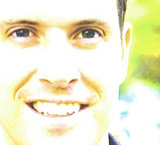 We’re taking a closer at several personal “life stream” platforms, in a effort to discover which offers the best options and features, based on my own set of criteria.
We’re taking a closer at several personal “life stream” platforms, in a effort to discover which offers the best options and features, based on my own set of criteria.
I explained the problem that spawned this little experiment in a previous post on my personal blog, but I’ll sum it up again here briefly. As an online marketer, photographer, “micro-blogger,” and multi-media hobbyist, I’m quite active on the web. I contribute to about 7 blogs regularly, two of those self-hosted, but still a visit to my existing personal blog doesn’t serve as evidence of that activity at all. And since I’ve chosen a WordPress.com hosted site for JordanBehan.com, it doesn’t allow for Javascript widgets or auto-posts from the likes of Flickr or Twitter to reflect that activity.
And so my quest has been to find a “life feed” site of sorts, that will be an accurate representation of the rest of my web activity mixed in with my infrequent personal blog posts. Hence, we dissect the features available from Tumblr.com, Soup.io, OnSugar.com and StoryTlr. I’ve experimented with all four (and many more I assure you) and pitted these against one another in a “Battle Royale-esque” cage match. Let’s size up our challengers:
Tumblr
The Tale of the Tape: Popular among Valley elite types, I had high hopes for Tumblr when I first signed up. An app with this much web cred certainly enters this battle as a heavy favorite.
The Blob by Blow: With the ability to display feeds from a number of sources and services, custom CSS and custom domain options, Tumblr comes out swinging and delivers on everything it promises.
The Decision: Without the ability to create on-site pages or menu navigation of any kind, Tumblr simply doesn’t promise enough, and does not emerge as the victor in our little mano-y-mano. My Tumblog remains live, but unless Tumblr starts rolling our features like Wal Mart rolls back prices, it’s not long for this world.
Soup.io
The Tale of the Tape: Soup enters this battle as one of two underdogs, but the little app from Austria punches way above its weight. Soup has all the functionality of Tumblr with a different (and after a short adjustment period, decidedly better) user interface (UI) for posting items and site layout/design. Offering free custom CSS and free domain mapping, Soup is a serious contender, especially for the price.
The Blow by Blow: For starters, I should mention that moments after joining Soup (and Twittering about it), I had received personal messages from the founder, and both the Soup account and Soup founder Christopher Clay were following me on Twitter. Big bonus points there. But while Soup offers the ability to write a site description with html (effectively letting me hack together a site menu) its lack of pages and real menu options still limit its potential to be our overall winner.
The Decision: I had early excitement about Soup, and had been using it for a cute little romantic project I built for my wife at Nubnoo.com. For this purpose; themed feeds based on search criteria, Soup is an ace. Alas, while I still have my personal Soup feed live and I hold a great deal of sentiment for it, it too comes up short in this project packed with pugilistic puns.
OnSugar.com
The Tale of the Tape: As more of a personal blog platform, and less of a “life stream” service, OnSugar is a bit out of place on this list. Still, I wanted to have a look at its features and offerings. After all, a new blog platform? Well it must be better, right?
The Blob by Blow: OnSugar is easy to use, looks great and does most everything that a personal blogger would want it to do. Except unfortunately for the aforementioned auto-posting from feeds, etc. OnSugar founder Bob Sugar replied to me on Twitter when I talked about this pending post, so he too deserves some credit for the personal touch.
The Decision: Sadly, OnSugar is a mere also-ran in this particular battle, as it doesn’t meet the basic criteria of the contest in question. Still, if you’re looking for a great free blog platform as an alternative to WordPress.com and the like, it’s worth a look.
StoryTlr.com
The Tale of the Tape: It’s built by just two dudes, one in in Belgium and one in the Netherlands. How good could it be? From their About page: “eschnou is our PHP Wizard and alardw the CSS Ninja.” The homepage presents a compelling set of solutions, so this little tool edges its way into our contest as a huge underdog.
The Blow by Blow: Storytlr displays content in two ways: As a “Lifestream” or as “Stories,” which are determined by a start and end date, and comprised of all items from your feed published during that time. As an example, I made a “story” of my trip to Korea last year. While it does not offer me pages or top of page menu navigation, it does offer a detailed “widgetized” sidebar that is satisfactory. Additionally, Storytlr lets you export any of your feeds as a .csv with one click, which is a neat little option for end users wanting to create a simple backup of their publishings.
The Decision: Since a winner must be declared in this tete-a-tete, it’s time to call it. The Champion, by decision, is none other than this surprisingly useful little tool called Storytlr. It offered more functionality, a great UI and the right set of options to almost completely solve my personal site dilemma. No surprise either, when you consider that a certian French blogging visionary seeded the idea in their heads:
From the Storytlr “About” page: A few months ago we saw this video from Loic Lemeur who was asking about a way to help him build ‘the centralized me’. We liked the idea because it sounded like reinventing the good old ‘personal page’, realizing that a blog can only capture one angle of what we did online. More over, we felt that this page had to be personal, and not yet another profile page locked in a social network, and plastered with company branding.
The Conclusion: I’ve ably documented some of the strengths and weaknesses of many of the above contenders, and as the dust settles I’m left with a decision: stick with WordPress and continue with a mostly inactive site, or switch completely to Storytlr, and instead show a noisy feed of Twitters, pics and sundry blog posts. If I am to do the latter, I have a few feature requests for the two Euro whiz kids in question:
- The ability to create pages, and have them displayed in the top menu navigation below the header.
- The links to “My 2.0 Life” are great, but they should (have the option of a) link to the profiles in question, not just the feeds.
- Let me change the names of the Headlines, Tabs, etc. (ie. “Lifestream” = Jordan’s Stuff, “My 2.0 Life” = Anything but “My 2.0 Life”)
If I start to see some of these developing, I’d be happy to pay for the service, fellas.
That concludes this little webby rope-a-dope for now. I’m glad I went through the exercise for a number of reasons, but feel as though it is anything but complete. I hope that you will offer your suggestions and ideas in the comments. I’ll update you on any new findings or game-changing feature releases from these competitors and others in the space.
 My friends from Adhack.com have just launched a new campaign called “Show us Your Balls.”
My friends from Adhack.com have just launched a new campaign called “Show us Your Balls.”![]()





 Please Note: This item is
Please Note: This item is 


